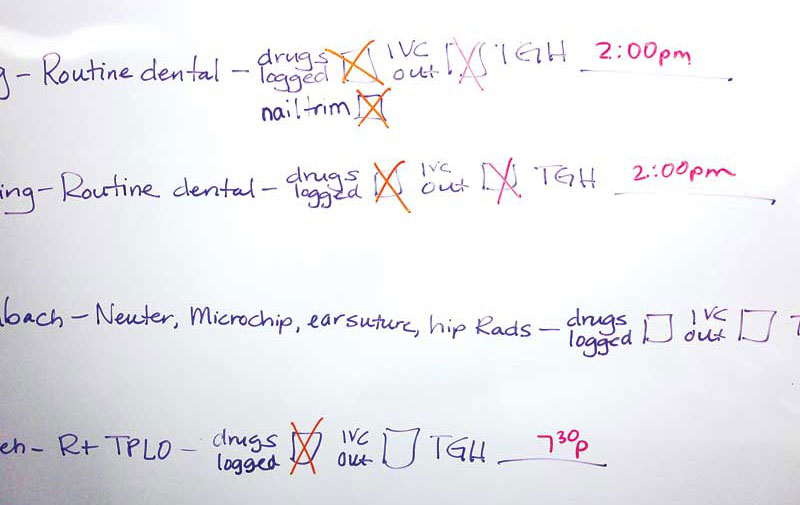 to decrease mistakes, reduce complications, and save lives" width="350" height="221" />
to decrease mistakes, reduce complications, and save lives" width="350" height="221" />  to decrease mistakes, reduce complications, and save lives" width="350" height="221" />
to decrease mistakes, reduce complications, and save lives" width="350" height="221" />
Even on the busiest shift, you can minimize the risk of making a mistake or forgetting something important. How? By using checklists.
Think about it. Without a checklist, a plane would never take off, a skyscraper would never be built, a liver would never be transplanted. This indispensable tool has been popularized by the bestselling book, The Checklist Manifesto, by human surgeon Atul Gawande, MD, MPH. How can we adapt them to our practices?
Before the crack of dawn, the surgery fairy sets everything up to ensure a smooth day for all. The OR pre-op checklist includes:
The patient admission process involves many moving parts. A checklist can streamline and speed it up by including:
Of course, this is assuming specific topics were clearly communicated during the pre-op consultation, including:
Once a patient is admitted, surgery nurses need to do their magic. Their checklist can include:
It is then important to have “surgery rounds” to decide on the best order of the procedures, confirm all the boxes were checked and nothing was omitted, and review any additional requirements.
Once the procedure starts, a checklist is yet again a simple way to ensure nothing was forgotten, including:
The anesthesia sheet itself contains another set of important information in the form of readings every five to 10 minutes:
Despite the common belief anesthesia is the riskiest part of surgery, it is during the post-op period that most complications occur. Post-op, patients should continue to be monitored, with vitals taken every five to 10 minutes until they become normal, then every two to four hours until discharge time. Your checklist should also direct staff to:
When a patient is returned to their owner, many seemingly minor tasks should be thoroughly documented because in all honesty, nobody will remember the details of the encounter in a few days. This avoids the classic “he says, she says” argument when something goes wrong. Include the following:
At the end of the surgery day, the OR needs to be turned around. Another checklist is helpful:
These checklists are merely a suggestion. They should be modified to fit your practice’s needs, including issues you may have encountered in the past. Checklists should not be static. They should evolve over time. Modify them as issues come up or unfortunate events unfold.
Once you are happy with your checklists as a team, you can rest assured the rate of mistakes should plummet. In fact, mistakes tend to happen when we don’t follow our checklists out of habit or hubris.
Checklists have been shown, in medicine and countless other fields, to decrease mistakes, reduce complications, and save lives. Implementing them, or improving yours, will dramatically increase client satisfaction, patient care, and team happiness.
Phil Zeltzman, DVM, DACVS, CVJ, Fear Free Certified, is a board-certified veterinary surgeon and author whose traveling surgery practice takes him all over Eastern Pennsylvania and Western New Jersey. You can visit his website at DrPhilZeltzman.com. He also is cofounder of Veterinary Financial Summit, an online community and conference dedicated to personal and practice finance (vetfinancialsummit.com). AJ Debiasse, a technician in Blairstown, N.J., contributed to this article.

NEW c/d Multicare Low Fat is tailored to fat-sensitive dogs and formulated to reduce the risk of calcium oxalate & struvite stone formation.

Our therapeutic nutrition targets underlying stress in cats with GI or urinary issues — helping provide relief to pets and their humans.